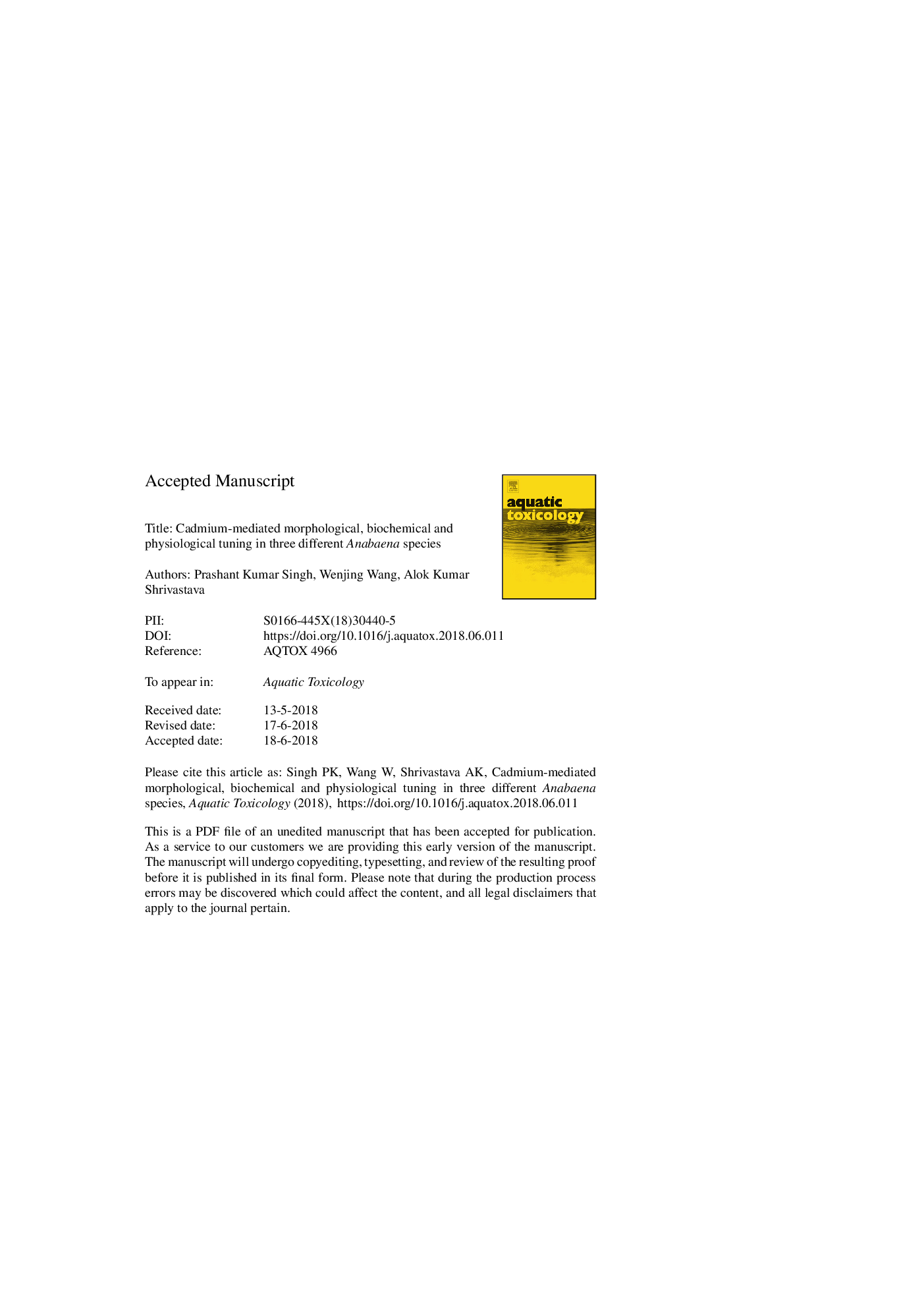| Article ID | Journal | Published Year | Pages | File Type |
|---|---|---|---|---|
| 8883639 | Aquatic Toxicology | 2018 | 25 Pages |
Abstract
Cyanobacteria are a natural inhabitant of paddy field and enhance the crop productivity in an eco-friendly manner. Cadmium (Cd) is a perilous trace metal element which not only limits the crop productivity but also inhibits the growth and nitrogen-fixing ability of these diazotrophs as well as the biodiversity of rice field semiaquatic agroecosystems. However, the impact of Cd toxicity in diazotrophic cyanobacteria is yet not adequately addressed. Therefore, in the present study, three diazotrophic cyanobacterial species, i.e., Anabaena sp. PCC7120, Anabaena L31, and Anabaena doliolum were subjected to their LC50 doses of Cd, and their physiological (PSII, Psi, respiration, energy status and nitrogen fixation rate), biochemical variables (such as antioxidant contents and antioxidant enzymes) together with morphological parameters were evaluated. The results of physiological variables suggested that the Cd exposure adversely affects the photosynthesis, respiration, and biological nitrogen fixation ability across three Anabaena species. The results of biochemical variables in terms of accumulation of antioxidants (glutathione, thiol, phytochelatin and proline) content as well as antioxidant enzymes such as glutathione S-transferase (GST), glutathione reductase (GR), catalase-peroxidase (CAT), ascorbate peroxidase (APX) and superoxide dismutase (SOD) revealed that their inter-species stress tolerance behavior may be attributed to the differential accumulation of antioxidants as well as differential antioxidant enzyme activity in three species. Furthermore, the enhanced antioxidant enzymes activity such as GST, GR, CAT, and SOD in Anabaena L31 advocated significantly higher as compared to Anabaena PCC7120 and Anabaena doliolum. In conclusion, Cd-toxicity assessment regarding physiological, biochemical and morphological aspects across three species identified Anabaena L31 as Cd-resistant species than the other two tested species, i.e., Anabaena PCC7120 and Anabaena doliolum.
Related Topics
Life Sciences
Agricultural and Biological Sciences
Aquatic Science
Authors
Prashant Kumar Singh, Wenjing Wang, Alok Kumar Shrivastava,
